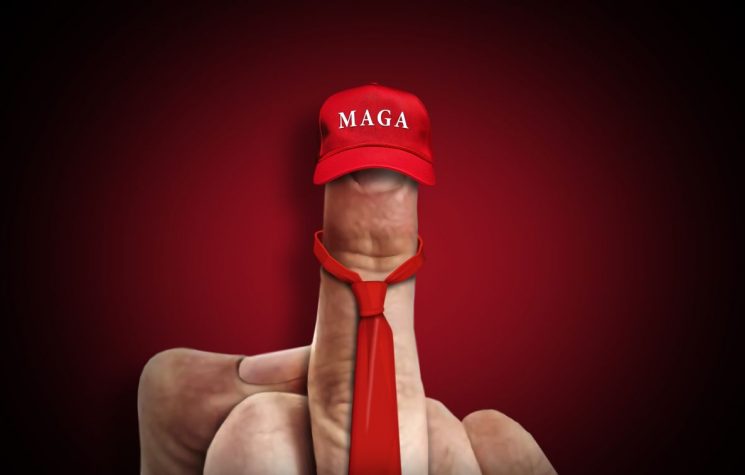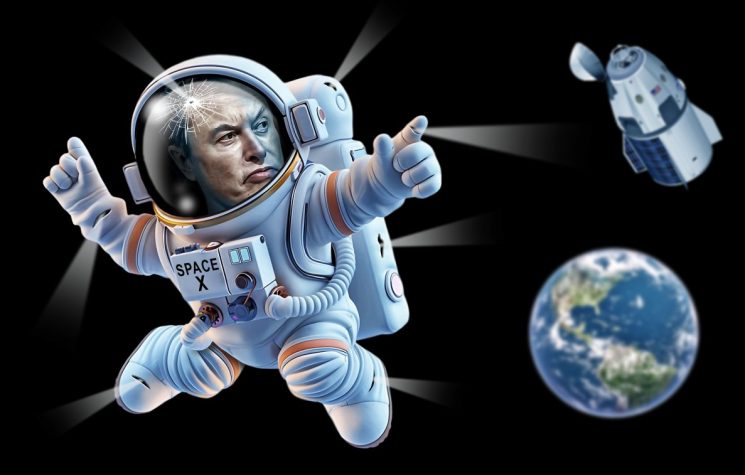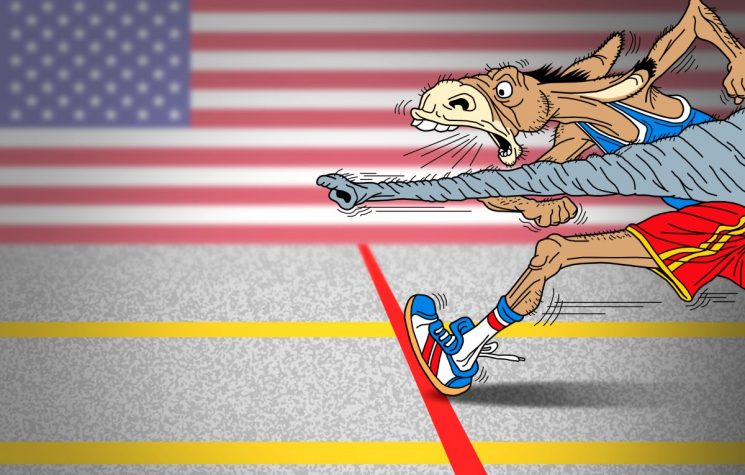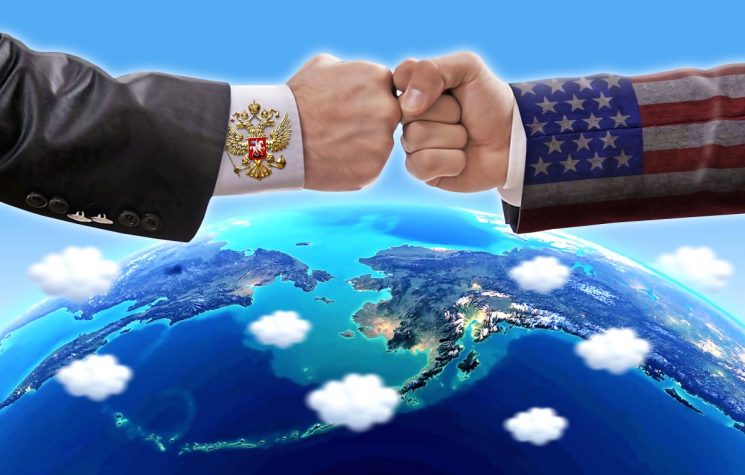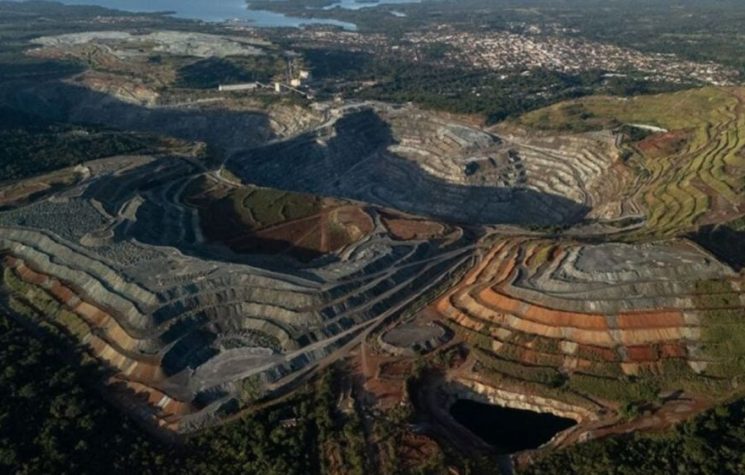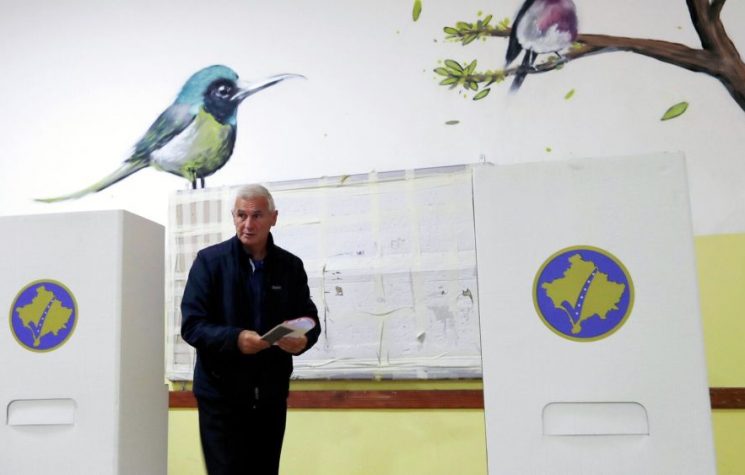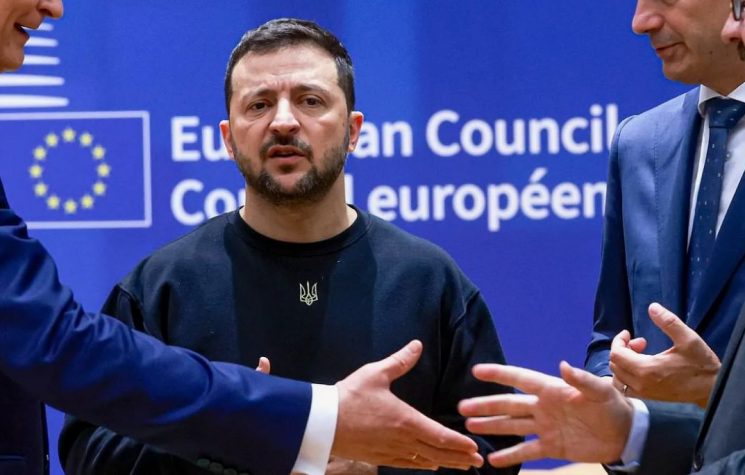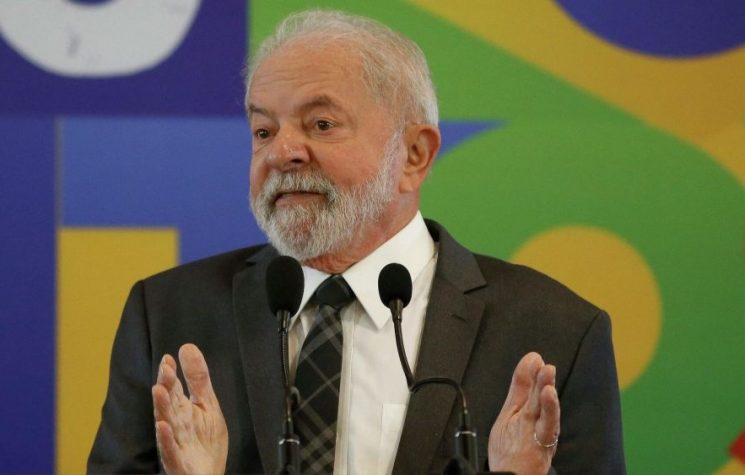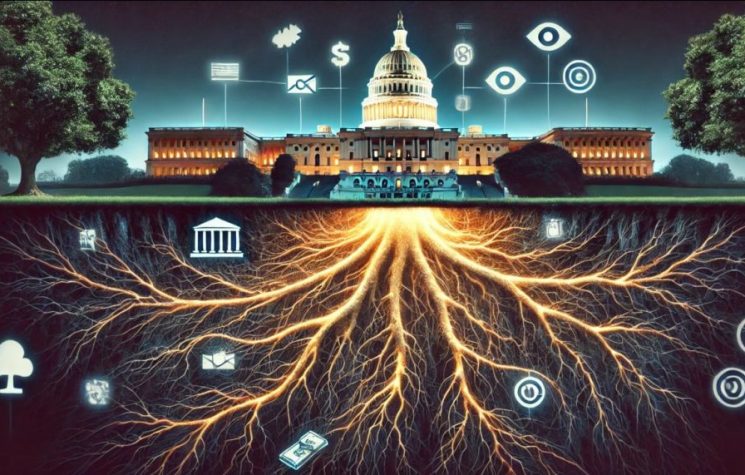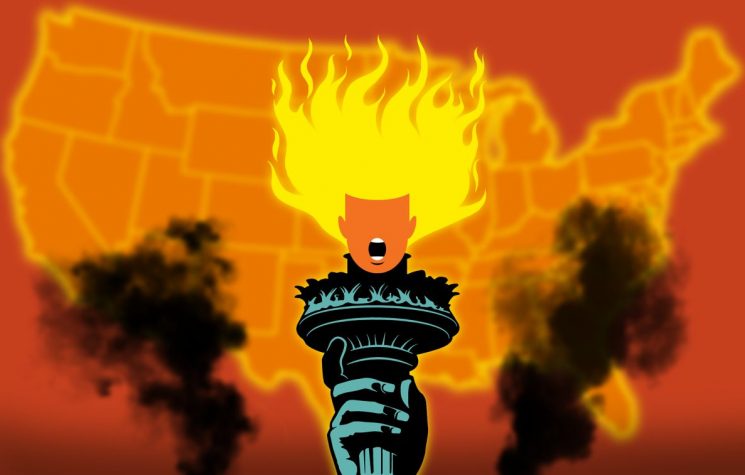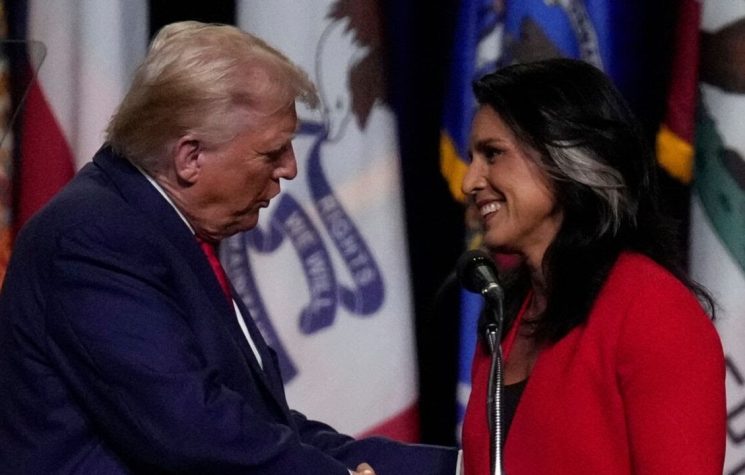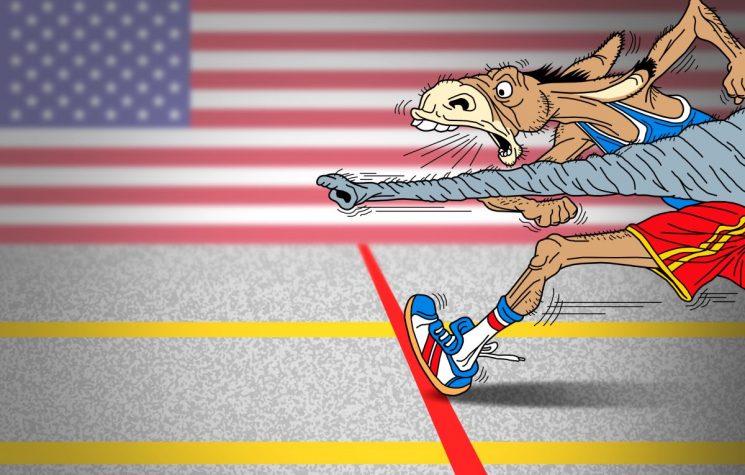President Trump’s performance even early in the debate seemed to be missing the mark, Joaquin Flores writes.
Contact us: info@strategic-culture.su
Follow Joaquin Flores as XF on Telegram @NewResistance
The debate stage on September 10th became a battleground of perceptions and first impressions, and President Trump’s performance even early in the debate seemed to be missing the mark. His presentation generally lacked the energy and charisma that once defined his public persona, having instead a demeanor that appears more suited to a weary office worker or demoralized husband than the dynamic political leader people had come to know. Trump’s failure to exude his usual vigor is what struck the most.
The host falsely slipped in that ‘both of you were elected four years ago’. Was that intentional? That works for Harris running against Trump as some ‘failed incumbent’ instead of defending Biden’s record, since she (or her boss) is the real incumbent that has explaining to do. This corresponds to strange social phenomenon we are all experiencing, how 2019 seems like two or three years ago, not five. Then we turn our thinking to the question of how many people turned 18 in the last eight years and how in the dark they are potentially about the actual story of the last decade. Once people form narrative impressions about things, they tend to shrug off inconvenient facts that point some other direction, even if those facts include things like ‘no, Trump was elected eight years ago, not four’.
President Trump’s hair is a part of his image, we cannot deny this nor the importance of image categorically. But this time it was awkwardly parted down the middle and reminiscent of Viktor Orban or even Ralph Wiggum from The Simpsons, and his absence of that trademark smile, raises questions about his current state of readiness and strategy and even bigger questions about those advising him in his orbit – or his ability to absorb what he should and discard what he needs to.
It’s clear that President Trump’s usual debate prowess, characterized by his combination of confidence and humor with an aggressive style of sharp and witty attacks, had not manifested this time around.
Vice President Harris for her part came prepared and ready to recite all that she had rehearsed. It seems her magic trick is to leave the weed or oxycodone at home, and get into proper law-school exam day form. She came with a clear strategy to win this debate, and if she was the only one of the two with a clear strategy, this would explain why a majority of debate watchers say Harris outdid Trump.
Instead of the forceful rhetoric and commanding presence we’ve seen in his rallies or the depth and care we’ve seen in online interviews, Trump seemed to be struggling to make a significant impact. This initial debate impression sets the tone for how voters perceive him moving forward, especially if Harris manages to continue to project competence and poise.
Trump’s Problems
With the debate format presenting a mere two minutes per answer, Trump’s tendency to cram multiple talking points into each response may be diluting his effectiveness. The ongoing insistence that the accusation of being a “Marxist” somehow isn’t abstract and is somehow relatable to voters is inexplicable, given the target audience in a debate such as this. “Globalist”, at any rate, is probably the better term to use, and not only from the perspective of coherence but also tactical reach to a broader audience. Also with an understanding of how viralized ideas emanate outward to broader audiences, the insistence that Harris is a ‘Marxist’ will actually work against his efforts to align with the working class and labor unions. Some 36% of Americans identify positively with the term ‘socialism’, and these are still the core of potential Democrat voters that feel betrayed by the DNC’s handling of Bernie Sanders.
That’s precisely the core of labor and union oriented issue voters (regardless of their own social class and membership) which cannot stand the DNC or Harris, and would vote for Trump, especially if they can appreciate his moderate stance on abortion and his pushing the party’s activist base away from the right on that subject.
The challenge now is whether he can recalibrate his approach and regain his footing in subsequent debates, or if this lackluster performance will become a defining feature in the minds of voters.
Trump’s presentation or approach as the debate began and through much of the debate was weak, with one or two exceptions. Whether this has the intended or unintended effect of strategically lowering anyone’s expectations about Trump depends on if there is a second (or third) debate.
What happened to that great Juan Domingo smile he so well practiced and we saw just a few years ago? That chin and those great white teeth, shiny cheek apples. But no, he seemed low energy and grumpy.
First impressions mean a lot. So, in trying to think what is going on other than Trump messing this up, and all the things that were always weak in Trump’s debate style, we are left with question marks. He does well attacking at times, but he can’t be low energy, grumpy, and attacking. Even in his best form, there are limits to his tendency to attack instead of counter-posing his positive vision and track record.
Yes, he does try to bring it back to his track record, but for whose sake? There is a slight undertone of a whining that he is not getting recognition for things – but the real point that people want to resonate with is that he did it for the American people, not for his personal accolades. He should express ‘joy’ that the economy that Biden and Harris inherited from Trump was in better shape than it is now, even if they did ‘take’ the credit – because it was good for the American people, and that was the point of it.
Where Kamala Succeeded
In a spirited opening to the presidential debate, Vice President Kamala Harris drew a sharp contrast between her vision for America’s economy and that of her opponent. Emphasizing her middle-class roots, Harris declared herself the sole candidate committed to “lifting up the middle class and working people of America.”
“Raised as a middle-class kid,” Harris underscored, “I have a plan that is about lifting up the middle class and working people of America.” Her campaign’s central theme revolves around creating what she calls an “opportunity economy”—a supposed plan aimed at bolstering economic stability and growth for ordinary Americans.
Harris highlighted a pressing issue she plans (not) to tackle: the housing crisis. “We know that we have a shortage of homes and housing,” she noted, pointing out the escalating costs that burden many families, without of course making reference to the Obama era policies which led to that crisis.
To address this, she proposes extending a substantial tax cut of $6,000 for young families. The problem, of course, is that Democrats in office could have done this in 2008, 2012, or in 2020. What they did instead is simply attack the Republican policies of the past administrations to bolster their credibility while also delivering nothing.
Her remarks also touched on her supposed dedication to supporting small businesses, drawing on personal experience. In support of such enterprises, Harris’s plan includes a $50,000 tax deduction for startup businesses, recognizing them as crucial to the nation’s economic backbone.
In a pointed critique of her opponent’s policies, which harkened back to a bygone era where Democrats were seen as the party of the middle and working class and an open society, Harris dug up the corpse of a labor democrat and accused Trump of favoring the wealthy over ordinary Americans. “My opponent’s plan,” she argued, “is to provide a tax cut for billionaires and big corporations,” which she claims would lead to a $5 trillion increase in the national deficit. She criticized his proposed “top sales tax,” a 20% levy on everyday goods, which she argued would cost middle-class families an additional $4,000 annually.
Harris delivered a clear and forceful articulation of her campaign’s economic platform themes, aimed at addressing the needs of everyday Americans and countering what she describes as her opponent’s detrimental policies. In reality, there is very little substance in the proposals themselves. As Trump rightly criticized, if a person goes to the Harris website and tries to read in detail the economic platform, it is just a few sentences which read like ‘See spot run’, a reference to 1950’s era 1st grade reading text books.
Kamala’s Strongest Moment
Vice President Harris had her strongest moment, and one that will rally her base with great enthusiasm, when she turned to a slouching and brow-beaten looking Trump and scolded him, yes scolded him:
“Nowhere in America is a woman carrying a pregnancy to term and asking for an abortion. That is not happening in — it is insulting to the women of America and understand what has been happening under Donald Trump’s abortion bans. Couples who pray and dreamed of having a family are being denied IVF treatments. What is happening in our country, working people, working women who are working one or two jobs, who can barely afford childcare as it is, have to travel to another state to get on a plane sitting next to strangers to go and get the health care she needs. Barely can afford to do it and what you are putting her through. That is unconscionable. And the people of America have not — the majority of Americans believe in a woman’s right to make decisions about her own body and that is why in every state where this issue has been on the ballot and red and blue states both, the people of America have voted for freedom.”
Trump Musters a Defense
President Donald Trump, nevertheless, did have some well made points in the earlier part of the debate. Trump launched a vigorous defense of his administration’s stance on abortion policy, sharply criticizing Vice President Kamala Harris’s assertions. Trump dismissed Harris’s claims as “an absolute lie,” emphasizing that no national abortion ban is on the horizon. According to Trump, the issue of abortion has been effectively returned to state control, which he argues aligns with the preferences of legal scholars across the political spectrum, as well as both Democrats and Republicans. He insisted, “We have got what everyone wanted,” highlighting that the matter is now under state jurisdiction and thus outside the realm of federal intervention.
Trump’s argument centered on the fact that the current political landscape makes a national abortion ban unfeasible. He asserted that such a measure is unlikely to pass in the current Congress, which is nearly evenly divided between Republicans and Democrats. “I won’t have to veto a national abortion ban because it’s impossible for her to get the vote,” Trump declared. Here he, at least textually, underlined the impracticality of Harris’s position and diminish her credibility on the issue. But optically, he was weak.
Further strengthening his argument, Trump drew a parallel between Harris’s abortion policy stance and the failed attempts to terminate student loans, framing both as examples of impractical and ultimately unsuccessful policies where voters were trolled into supporting something they had no real commitment to. He characterized the student loan initiative as a “total catastrophe” and suggested that Harris’s proposals on abortion rights are similarly doomed to failure.
Trump’s argument effectively utilized several key points: the successful decentralization of abortion policy, the current legislative realities that make a national ban improbable, and a critique of Harris’s past policy failures. By focusing on these aspects, Trump did make some headway in reassuring the debate’s viewers of his administration’s achievements, and casted doubts on the viability of Harris’s proposals.
Harris Wins
Left Harris – Right, Nova H1 Audio Earrings – Identified?
As Harris just seems basically competent, and as Trump continues to look like a grumpy man-child, then that is it. She wins. Harris rehearsed; she is not retarded, she is just not a mastermind. While we noted her experience with studying for exams as a law student may have helped, that was many decades ago.

Fortunately, new and exciting ways to cheat on exams have also emerged. It seems a large part of the internet believes that Harris cheated during this debate, the fount of her clarity in the debate. The allegation is that she used Nova H1 Audio Earrings which are actually blue tooth audio ear pieces. Newsweek has already run an interference piece calling it a conspiracy theory.
If Trump inadvertently set a low bar for himself, and there is a second debate, will he rise to something better and get ‘press’ around that? All of this then seems to hinge on what media, and what acknowledgment, and from where. Because the question of visibility, and who was even watching this in the first place, is critical.
Going into the debate, 90% of voters said they already felt they knew enough about Trump to make a decision. 70% of voters said the same about Harris. That seems like territory that Harris can really pull ahead in the polls, whatever the hell those are. Yet her trend is that for every one point she picks up, she gains an anti. Her disapproval rate is astronomical for a candidate, so by the numbers, she does not look good.
Trump – Rambling and Grumpy
The questions remain: What was Trump doing in this debate, and separately, what is the strategy and how, if at all, was this debate used by Trump in a strategic way, or was it just a failed opportunity?
He did get one idea across when he used the phrase ‘your boss’. This was golden because it sets up the entire power dynamic and perception of who she is. Yes, in the immediate sense, we know this reference is to Biden. But neurolinguistically, as they say, the reference is deeper and more profound—she has a boss, and it isn’t you, the American people. By being his own boss, Trump can ‘give it all’ to America. There is no other boss, puppet master, check signer, or ‘team’ he has to answer to. With Trump, you know who is in charge. But that isn’t coming across; only that line ‘your boss’ is the seed planted with regard to perceptions about Harris.
Trump is caught in the framing of the debate format, which is 2-minute answers. What Trump is doing wrong is swallowing his leading points, packing many other tangentially related things into his answers. The only unifying theme is that they ‘attack’ Harris. Perhaps our read of these things is based on where we come from. But what people want to see is rather than attack Harris as a rule—instead, focused and brief ‘attacks’ when they match the subject matter—but he needs to stand up straight first of all. Turn that frown upside down.
Trump and Labor
Trump won many blue-collar, labor, working-class votes in 2016 and 2020. This is a huge vector to continue to win with, and this was strategic and correct, as I wrote at the time as far back as the first campaign in 2015, all those years ago. Yet, as a debater, Trump is getting the words out there, but he’s ramming them all together. It’s like he has all these things to say but thinks he needs to say them all in 2 minutes. Instead of staying on the subject and showing some depth and deliberation, we just hear ‘open borders, these illegals, she’s a marxist, 9-month abortions, crime wave’, and frankly, it is boring.
This is not to say that these issues aren’t on people’s minds pretty prominently. But are we really speaking to the issues on voters’ minds in an effective way, just by mentioning them very quickly, in quasi-related tangents, all wrapped up in 2 minutes? Was there concern that the only product of this debate would be shortened sound-bites? I’m trying to wrap my head around the communications strategy here of packing every potential talking point into the 2-minute answers, each time. It is repetitive, but also unclear, and decreases, not increases, the impact of the points. The greater problem for Trump is that it is not clear that there was a communications strategy here.
Back to labor and the working class—the DNC, like we said, hasn’t touched this subject since 2012. They have returned 12 years later and remembered some SEIU-manufactured, market-tested phrases like ‘working families’. Now Harris is mentioning the working class, mentioning working families. Trump may get there, but Harris has a narrative she is bringing to this debate and a method of delivery.
Trump has given neither a focused narrative nor has he given us a good method for delivery. Harris opened with a positive affirmation of her plan to lift up the conditions of the middle class and working people—taken right from Trump—who previously had the right to take it when the DNC opted to abandon it a dozen years ago.
Ending with Labor
There’s so much more that can be said about this debate, and Trump did have some strong moments later in the debate, which no doubt Trump voters will be viralizing. We wanted to focus on his overall impact and impression, especially opening impressions in the early part of the debate. This is where themes in his already built-up ‘warchest’ of support, themes, and ideas aren’t being weaponised well, at least not coherently where first impressions matter.
Trump’s advisors are limited in that they do not understand labor, labor culture, labor expressions. They have invited some of the right people and made some moves, but there is a lack of entrepreneurship and cold-calling going on. Trump’s people should be calling every labor leader down to the shop steward and executive board level of each union local in key sectors. Longshoremen, Electrical Workers, Teamsters, Auto Workers, Building Trades, and similar.
They needed to run their pro-labor campaign this year like a union certification campaign. Instead, we just got vague, top-down messaging that made it seem like ‘labor’ is just some minor interest group that one must ‘get support from’, as if labor were only one of another quasi-pluralist institution like the AARP or the Sierra Club. No, we are talking about 10% of the work force or some 14 million Americans, who largely cannot stand Harris.
To start with, Trump needs to use labor expressions, like “An Injury to One is an Injury to All!” or, what about MAGA’s own, “Where we go One, we go All!” as a labor union rallying cry? It fits perfectly as an expression of labor solidarity. Trump mentioned ‘unions’ in the debate in terms of how Kamala, in office, will do bad things that will harm unions. Fine, but this was all jumbled together in some 2 minutes where something else was the focus and also smashed in with something about open borders, She’s a Marxist, and criminal migrants on sprees or something. Can we just focus on something? And smile, and stop slouching.











